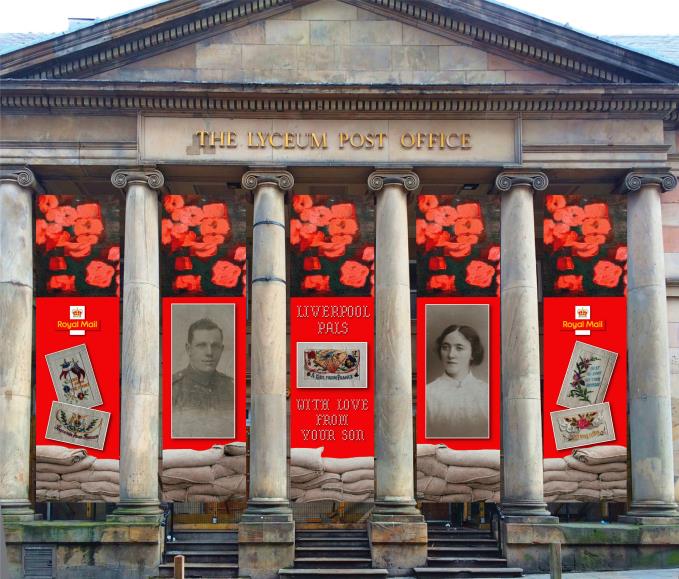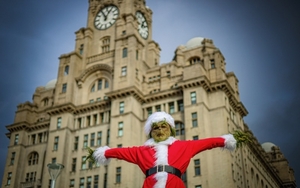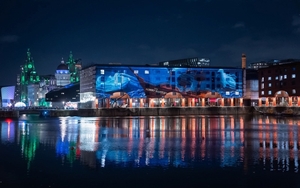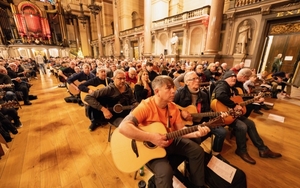IT was, after all, a Post Office, so where better to read letters from Merseyside men on the World War I frontline than The Lyceum, on Bold Street?
In time for the centenary of The Battle of the Somme, a compelling trove of correspondence from soldiers to their loved ones wlll once more see the light of day, for all to see, on a 60ft high display on the exterior of the Grade II listed landmark.
The letters are held by Liverpool John Moores University in its Merseyside at War archive.
Designed by The Sound Agents Moira Kenny and It's Immaterial's John Campbell, the installation will see five huge panels fixed between the building’s Doric columns.
Liverpool BID Company has commissioned the work as part of Liverpool’s Healthy High Street programme, which aims to increase footfall and reduce the number of vacant units in the city centre. Subject to planning approval it will be erected by mid-May.
Mike Doran, head of comms for BID, which is co-funding the project via a levy raised on city centre businesses, said: "There are so many untold stories about World War I and the reaction to the poppy installation at St George’s Hall inspired us to look at how we could bring them to life.
"Once we heard about the letters archive and knowing The Lyceum was a former post office there was only one place we wanted to do this and we’re delighted that the owners have given it their full support.
"It will provide a perfect canvas to tell the truly astounding story of how our soldiers were able to communicate under unimaginable conditions, which in our digital age seems like a different universe."
 Sort of how it will look
Sort of how it will lookThe Sound Agents are widely known for work that helped highlight the fate of Liverpool's Chinese seamen in World War II and the Opera for Chinatown installation on the boarded up windows of Duke Street.
- Chinese sailors become giants of Duke Street's desolation row
- Children of Chinese sailors demand Home Office apology
Moira Kenny said: "The communication between soldiers and loved ones was vital to frontline morale. Over two billion letters were sent and received during The Great War, connecting the men to the homes and families they left behind, leaving a legacy of vital documents depicting their personal experiences from the trenches.
"We are looking forward to using the archive at JMU to create the art work using a number of the images to tell a compelling story.’’
 Opera for Chinatown
Opera for ChinatownDoran added: "We’re delighted to be working with the Sound Agents as they have a brilliant track record in dealing with such sensitive material and creating powerful images.’’
Mayor of Liverpool Joe Anderson, who is supporting the project, said: ‘’We were truly overwhelmed by the response to the poppies at St George’s Hall but it is important that Liverpool continues to commemorate the events of World War I as so many people from this city paid the ultimate sacrifice.
‘’For their families the only thing they had to remember them by was their letters and how our soldiers managed to pen and send them in truly horrific conditions is a minor miracle. We are fortunate in Liverpool to have such a precious archive that has recorded their stories for us all to see what war truly means.
‘’I hope by using The Lyceum in this compelling way we manage to put a spotlight on this very human aspect of the war and in doing so remind everyone that this city will never forget those who never returned home.’’
The work will also incorporate a poppy motif as a tribute to the fallen as well as a salute to the Weeping Window installation that adorned St George’s Hall, which attracted more than 350,000 people over the winter.
- More: What links the Great War with Iggy Pop's Jacket?
- More: The faded flower from the fields of blood
- More: Tower of London poppies come to Liverpool














